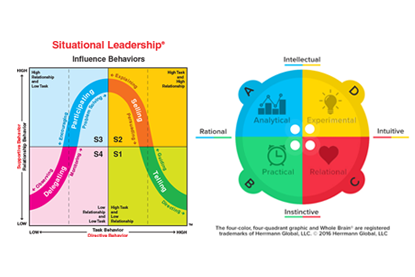

Have you ever made the mistake of purchasing something you had to take home in a box then assemble? Maybe it was a toy — or a tool or a table (perhaps even something else that begins with the letter “t”). Point being, many of us have found ourselves staring at separate piles of like materials neatly arranged on a garage floor trying to make sense of instructions that were clearly developed for somebody with special powers of interpretation.
Usually the only good news in that scenario is that almost invariably, as you “eyeball” your inventory of seemingly disparate parts, there are always a few that (for whatever reason) just seem to somehow fit together (i.e., you don’t need the piece of paper written in a foreign language with the bad graphics to figure out that “Part A” connects with “Part B”).
Contact Us
It struck me as I navigated my way around a training conference recently that if leadership development was the “toy, tool or table” you were trying to put together, you’d be able to figure out that the original Situational Leadership® Model (developed by Dr. Paul Hersey) and Whole Brain® Thinking (developed by Dr. Ned Herrmann and enhanced by his daughter Ann Herrmann) just fit together.
Let’s keep this simple:
So, net-net, Situational Leadership® is a model that depends upon accurate diagnosis. Diagnosis is a cognitive competency. Whole Brain® Thinking (at a minimum) helps leaders understand their strengths and potential blind spots when it comes to the task of diagnosing.
So, while you might understandably struggle with how some of the other pieces of your leadership puzzle might fit together, from our perspective, you don’t need to invest a whole lot of energy into trying to figure out how Situational Leadership® fits into Whole Brain® Thinking (or vice versa). It just fits!
Visit these two websites and either confirm (or challenge) the central theme of this blog: